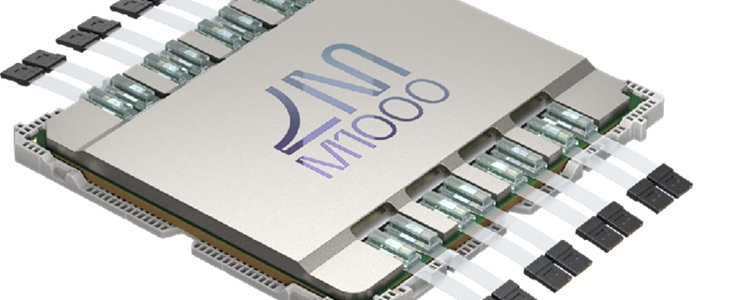Lightmatter, a Boston-headquartered startup valued at USD 4.4 billion, has unveiled Passage M1000, a 3D Photonic Superchip designed for next-generation XPUs and switches. The Passage M1000 enables a record-breaking 114 Tbps total optical bandwidth for the most demanding AI infrastructure applications.
At more than 4,000 square millimeters, the M1000 reference platform is a multi-reticle active photonic interposer that enables the world’s largest die complexes in a 3D package, providing connectivity to thousands of GPUs in a single domain, the US company said. In existing chip designs, interconnects for processors, memory, and I/O chiplets are bandwidth limited because electrical input/output (I/O) connections are restricted to the edges of these chips. The Passage M1000 overcomes this limitation by unleashing electro-optical I/O virtually anywhere on its surface for the die complex stacked on top, according to a media release.

Pervasive interposer connectivity is enabled by an extensive and reconfigurable waveguide network that carries high-bandwidth WDM optical signals throughout the M1000. With fully integrated fiber attachment supporting an unprecedented 256 fibers, the M1000 delivers an order of magnitude higher bandwidth in a smaller package size compared to conventional Co-Packaged Optics (CPO) and similar offerings. Lightmatter has worked closely with industry leaders, including GlobalFoundries (GF) and Amkor, to facilitate production readiness for customer designs based on the M1000 reference platform, while ensuring the highest standards of quality and performance, the media release said.
The Passage M1000 utilizes the GF Fotonix silicon photonics platform which offers seamless integration of photonic components with high-performance CMOS logic into a single die, creating a production-ready design that can scale effectively with AI demands..
Technology

Lightmatter’s photonic superchip advances interconnect innovation

With fully integrated fiber attachment supporting 256 fibers, Passage M1000 delivers an order of magnitude higher bandwidth in a smaller package size compared to existing CPO solutions.















